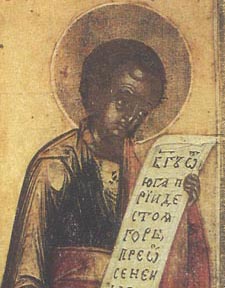 In the Liturgy of the Latin Church the the holy prophets are not recalled except that the Roman Martyrology remembers. The Eastern Churches have the prophets on their liturgical calendar and commemorated in the Liturgy. I find it important to remember in the sacred Liturgy the prophets because they are a distinct part of our biblical history and literature, our moral thinking and acting, our spiritual and liturgical lives. Today, is the memorial of the famous holy prophet, Micah (even if commemorated with our Eastern brethren).
In the Liturgy of the Latin Church the the holy prophets are not recalled except that the Roman Martyrology remembers. The Eastern Churches have the prophets on their liturgical calendar and commemorated in the Liturgy. I find it important to remember in the sacred Liturgy the prophets because they are a distinct part of our biblical history and literature, our moral thinking and acting, our spiritual and liturgical lives. Today, is the memorial of the famous holy prophet, Micah (even if commemorated with our Eastern brethren).
Micah prophesied between 750 and 687 bc. He was a contemporary of Amos and Isaiah. Micah’s words were an indictment against the rich, the avaricious money lenders, swindling merchants, families divided by rivalry, and all petty tyrants and bureaucrats, whether dressed as judges or rulers, priests or prophets. They were the very antithesis of the divine ideal he preached, namely, “to deal justly, to love tenderly, and to walk humbly with God.”
Failure to do these things, Micah warned, will bring punishment. He specified the destruction of Samaria and the fall of Jerusalem, but he also held out a hope for the faithful remnant. He described the birth of a peaceful king who will pasture the flock of the Lord. Micah foretold that this event would take place in Bethlehem of Ephratah, which was known as “the least of the clans of Judah.” (NS)


 e Catholic Church honors the Old Testament prophets on canon of saints, they’re listed in the Martyrologium Romanum. Today, the Church liturgical recalls
e Catholic Church honors the Old Testament prophets on canon of saints, they’re listed in the Martyrologium Romanum. Today, the Church liturgical recalls